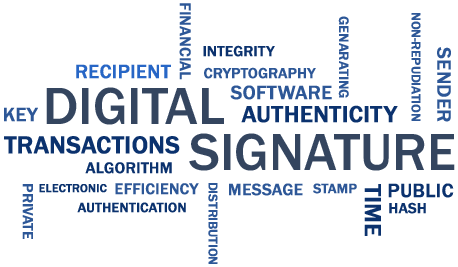Digital Signature and its working procedures
Introduction
Digital Signature is a digitally generated code to identify the ownership of the document while working with digital devices. In another word, it can be defined as the process which guaranteed the content of the message cannot be altered on transit. The signature provided to a content is uniquely identified by a hash key. The hash key is generated by applying algorithm like RSA. RSA is an algorithm used to encrypt and decrypt the content/message by the modern computer. The digital signature also provides assurance of evidence to identify, origin and status of electronic content, message or transaction.

Working Procedures of Digital Signature:
Digital signatures are like a handwritten signature, which are unique to each signer. By implementing the mathematical algorithm, two long encrypted string was generated which are called keys. Those keys are: the public key and private key. Mathematical algorithm act like the cipher, creating data matching the signed document, called a hash, and encrypting that data. output encrypted data is the digital signature. The signature is also marked with the time that the document was signed. The signature is invalid if it was changed after signing.
For example, Party A(Seller) signs an agreement to sell timeshare using the private key. Party B(Buyer) Receives the content. Party B who receive content also receive a copy of party A’s public key. If the public key can’t decrypt the signature using cipher from which the key was created, it means the signature has been changed since it was signed. The signature is then invalid.
